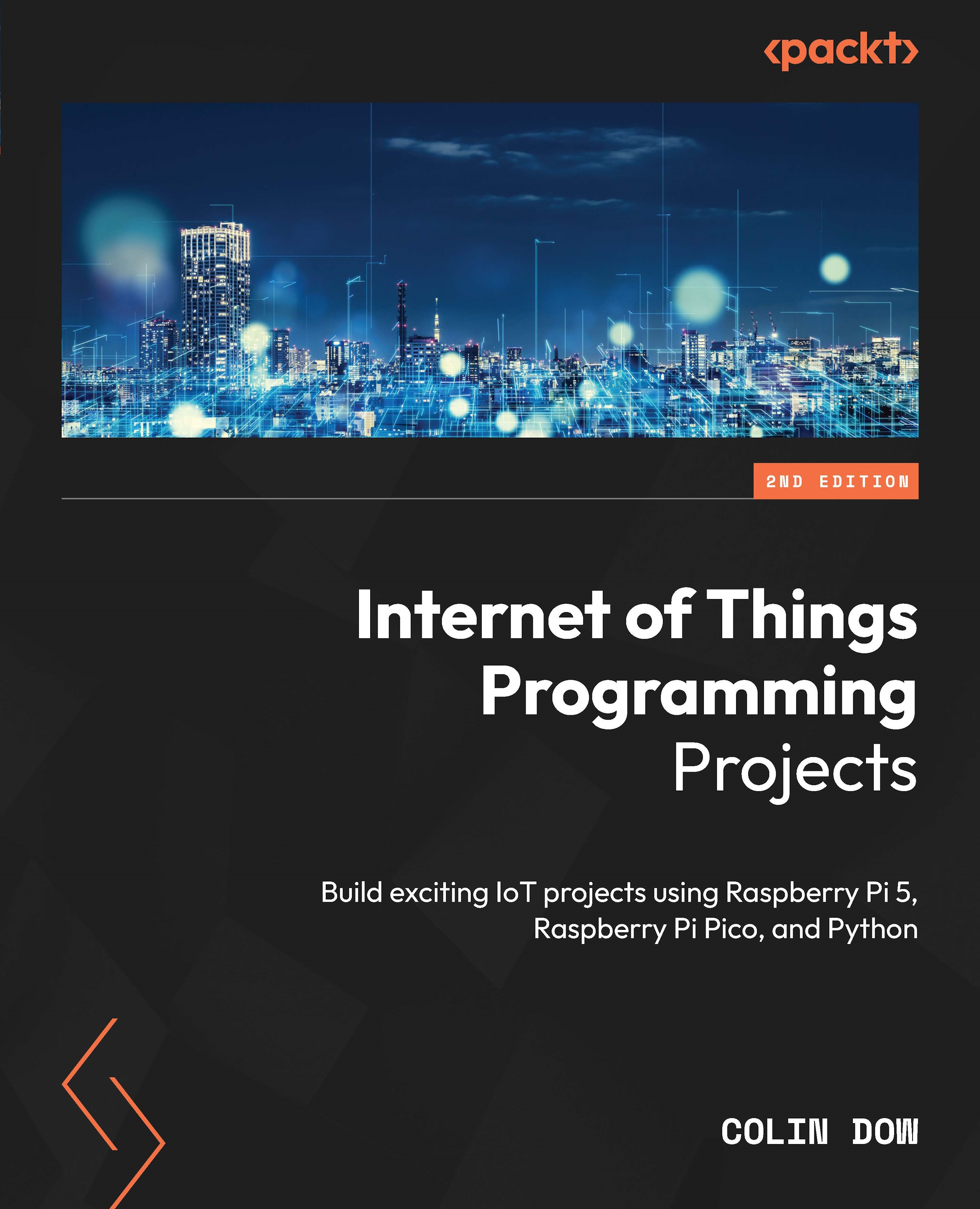Wiring up our circuit
To simplify wiring, we’re using a GPIO expander along with our Raspberry Pi Pico WH. The case that we will build later allows for easy transfer of the test circuit wiring, highlighting the practicality of using a GPIO expander. We can see the components that make up the IoT joystick in the following figure:

Figure 12.2 – Components of the IoT joystick
In Figure 12.2, the components we are using include a 24 mm arcade-style button, a green LED (any color will do) soldered to a 220 Ohm resistor (refer to Chapter 3 for directions on this), and a PS2 joystick module.
This setup makes it easier to transfer our components to a custom case for final installation. Using these components, we wire up our circuit using Figure 12.3 as a reference:

Figure 12.3 – Wiring up the IoT joystick
The connections are as follows:
- The arcade-style button connects to GP0 and GND.
- The positive...


























































